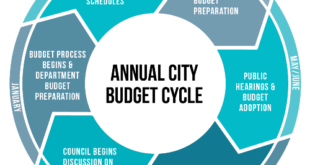By Jim Pumarlo
A mayor takes issue with an editorial that criticized a city council action, calling your facts into question. Irate parents challenge your decision – your right – to report their son didn’t dress for the basketball game because he was suspended for violating school policy. A pastor is critical of an ad you accepted for publication, saying it was in poor taste.

Hardly a week passes that a newspaper’s policies and practices aren’t called into question. Many complaints are fielded in private conversation.
In other instances, though, readers want to share their opinions with a wider audience with a letter to the editor – which often spurs additional conversation both pro and con on the newspaper’s decision. The exchange soon dwindles, and the newspaper likely wins high marks for allowing readers to toss brickbats as well as bouquets.
There are cases when editors feel compelled to add a P.S. to a letter. I urge you to think twice – even three times – before doing so. Postscripts may give you a “feel good” sensation in the short term, but they can have long-term consequences in relationships with your readers, and rarely for the better.
Don’t get me wrong. Some letters warrant a response. I’m a firm believer in having a dialogue with readers. That includes writing columns to explain news decisions, especially when an issue is raised in your newspaper. But there are some important considerations.
First and foremost, don’t blind side the writer. It’s always best to have a conversation with the author. Explain your decision-making and your wish to explain your reasoning to the broader audience. Gauge the reaction; the conversation may dissuade you from writing anything.
If you proceed with a column, the author deserves a heads-up. You may well view the column as an explanation; the writer will likely view it as a rebuttal. That’s all the more reason to connect.
The process is fairly straightforward when dealing with the person who feels mistreated by a newspaper decision and pens a letter. It becomes more complicated with a “third party” complaint.
Consider the woman who criticized a newspaper headline: “Drug defendant dies at 19; cause unclear.” She wrote, in part, “What you did was not responsible journalism. It was callous sensationalism.”
In this case, the more important consideration in any editor’s response is the family of the youth that will be drawn into additional limelight through no fault of their own. The letter itself will likely generate more attention; you’re in a difficult position to stop additional exchange. A column also may prolong the debate, and you do have a choice in that regard. A conversation with the family, at minimum, gives you an opportunity to explain your decision in private.
Those conversations can be difficult. Individuals may refuse to talk and hang up abruptly. But the calls also might pay you dividends in the long run. I speak from experience. I made many a call to individuals when our news decisions were called in question. Some remained a private conversation; some resulted in a column. In all instances, the readers – our customers – gained a better understanding of the hows and whys behind our decisions, even if they did not agree.
If you write a column, don’t be afraid to say that, upon reflection after the crush of deadlines, you may have handled the circumstances differently – if that is the case. Showing that you are human, too, strengthens your credibility.
Requisite to writing any column is having a conversation with the author and/or affected individuals. In contrast, many editors tack a P.S. on letters without ever connecting with the author. From the writer’s perspective, editor’s notes are just an example of the newspaper having the “last word” and diminishing the impact of the letter. Do so, and it’s a good bet the authors will be hesitant to submit another letter. They will be unafraid to express that sentiment to friends, too. In the end, you lose with the author and your readers.
Jim Pumarlo writes, speaks and provides training on community newsroom success strategies. He is author of “Journalism Primer: A Guide to Community News Coverage,” “Votes and Quotes: A Guide to Outstanding Election Coverage” and “Bad News and Good Judgment: A Guide to Reporting on Sensitive Issues in Small-Town Newspapers.” He can be reached at www.pumarlo.com and welcomes comments and questions at jim@pumarlo.com.
 Nevada Press Association The best in Nevada journalism since 1924
Nevada Press Association The best in Nevada journalism since 1924



